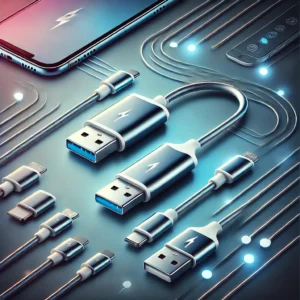Worried that fast-charging power banks might harm your phone’s battery? Learn the truth about fast charging, potential risks, and how to keep your device safe!
🌟 Introduction
Have you ever plugged your phone into a fast-charging power bank and thought, Wait… is this killing my battery? You’re not alone! With the rise of 18W, 30W, and even 65W power banks, the fear of damaging your smartphone battery is very real.
But here’s the good news: fast-charging power banks don’t automatically destroy your phone. However, improper use or low-quality chargers can cause harm. In this article, we’ll break down the facts, debunk myths, and share practical tips on how to safely use fast charging power banks without shortening your battery’s lifespan.
⚡ How Does Fast Charging Work in Power Banks?
Before we dive into the risks, let’s quickly cover how fast charging works. A fast-charging power bank delivers higher voltage and amperage to your phone, reducing the time it takes to reach 100%. Most modern power banks use:
| Fast Charging Technology | Wattage | Common Use Cases |
|---|---|---|
| Quick Charge (QC 3.0, QC 4.0) | 18W – 30W | Android phones, tablets |
| Power Delivery (PD) | 18W – 100W | iPhones, MacBooks, Nintendo Switch |
| SuperVOOC, Warp Charge | 30W – 65W | OnePlus, Realme, Oppo devices |
A high-quality power bank communicates with your phone to determine how much power it can safely accept. So no, it won’t force more power into your phone than it can handle!
👉 Want to dive deeper? Check out our How Fast Charging Works in Power Banks (Explained Simply) guide!
❓ Can Fast Charging Power Banks Damage Your Phone?
Let’s bust some common myths!
✔️ Fast Charging Itself Doesn’t Damage Your Battery
Your phone has a built-in battery management system (BMS) that regulates power input. Even if you plug it into a 65W power bank, your phone will only draw what it needs—typically 18W or 25W.
❌ But Heat Can Be a Problem
Fast charging generates heat, and excessive heat over time can degrade your battery. If your phone feels hot to the touch, it’s best to unplug it for a while.
🛠️ Cheap, Uncertified Power Banks Are Risky
If you buy a low-quality or fake power bank, it might deliver unstable power or fail to cut off when your phone is fully charged. This can lead to overcharging, overheating, and reduced battery life.
🔥 Signs That Your Power Bank Might Be Hurting Your Phone
Worried your power bank might be causing issues? Watch out for these warning signs:
| Warning Sign | What It Means |
| 🔥 Phone gets too hot while charging | The power bank might be delivering inconsistent voltage |
| 🔄 Battery drains faster than usual | Fast charging cycles might be reducing battery efficiency |
| 🛠️ Power bank output is unstable | A cheap power bank may not regulate power properly |
| 🩸 Phone battery is swelling or bloating | This is a major red flag—stop using the power bank immediately! |
If you notice any of these issues, it might be time to upgrade to a high-quality, certified fast-charging power bank.
👉 Need recommendations? Check out our Best Fast Charging Power Banks for Every Budget (2025) guide!
🛡️ How to Safely Use a Fast Charging Power Bank Without Damaging Your Phone
✅ Use certified brands (Anker, RavPower, Baseus, etc.) ✅ Match wattage to your phone’s charging specs (don’t use 65W for a device that maxes at 18W) ✅ Avoid extreme temperatures while charging ✅ Don’t let your phone’s battery drop below 20% too often ✅ Use a high-quality charging cable that supports fast charging
👉 Looking for the best power bank for your needs? Our Ultimate Guide to Fast-Charging Power Banks has all the details!
💡 Is It Better to Use a Wall Charger Instead?
While a power bank is great for travel and emergencies, a wall charger is usually the better choice for everyday charging. Here’s why:
| Factor | Power Bank | Wall Charger |
| Convenience | Portable, good for travel | Stationary, but more reliable |
| Charging Speed | Depends on wattage | Often faster and more stable |
| Heat Generation | Can overheat if not well-ventilated | Usually better at managing heat |
If you mainly charge your phone overnight, a good wall charger is the way to go. But for on-the-go power, a high-quality fast-charging power bank is a lifesaver!
🔮 The Verdict – Should You Worry About Fast Charging Power Banks?
Let’s sum it up:
✔ Safe: If you use a high-quality, certified fast-charging power bank ❌ Risky: If you use cheap, unregulated power banks that overheat or provide inconsistent voltage
Final pro tip: Balance fast charging with slower overnight charging. Your battery will thank you!
👏 Conclusion
Fast-charging power banks won’t destroy your phone, but using a cheap, unregulated one might. Stick to trusted brands, match the right wattage, and avoid excess heat for the best results.
Have you ever had issues with a fast-charging power bank? Share your experience in the comments!




